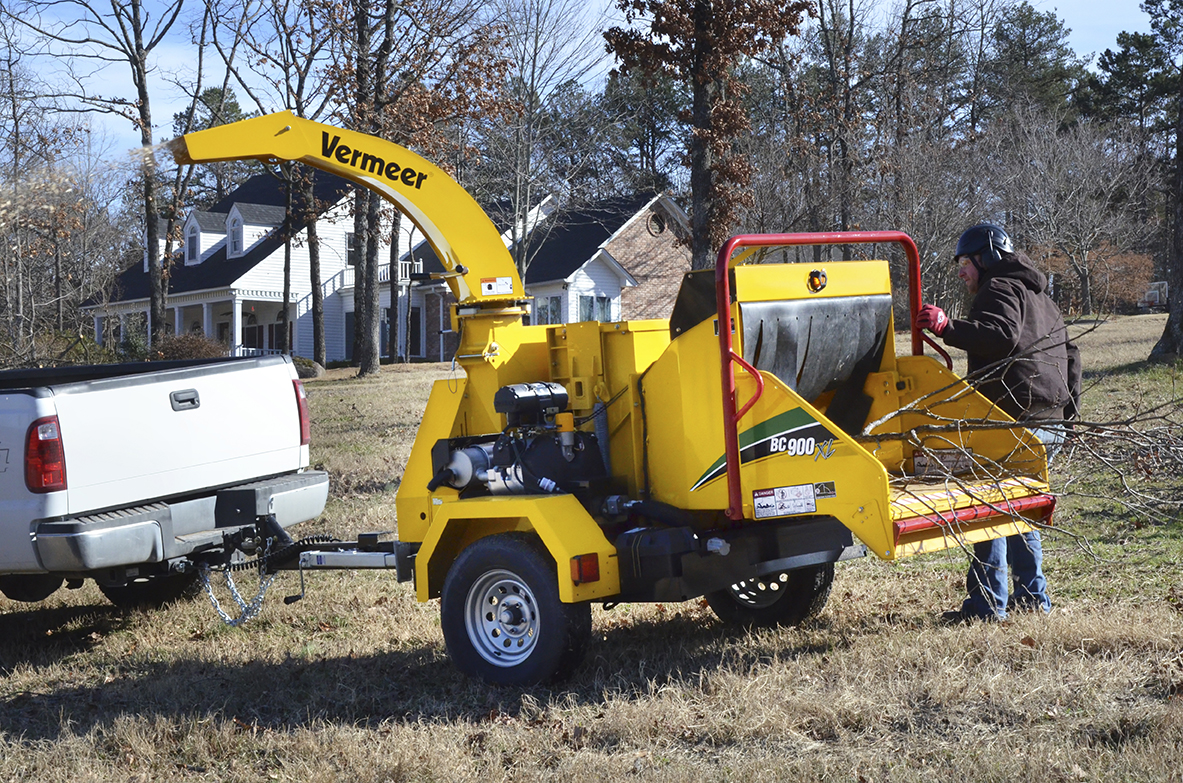Matching brush chipper infeed capacity to specific tree care tasks enhances processing efficiency and chipper performance. Many factors can influence the efficiency and productivity of tree care equipment, although none likely more important than effectively managing equipment fleets.
Model selection
The staple of a successful professional tree care service company is the brush chipper. Identifying and matching chipper infeed capacity with specific tasks and crew experience is an important first step in effectively managing equipment fleets. Brush chipper models typically range from a smaller 6-inch (15.2 cm) infeed to 21-inch (53.3 cm) diameter capacity. Understanding which infeed size works best for processing different waste wood material size and mass is an important component in achieving operational efficiency.
Another important factor to consider when adding a new brush chipper to an equipment fleet is the specific task or type of tree care service performed most often. Understanding chipper capacity is helpful in making prudent model selections that will be most efficient for specific functions. For example, smaller diameter chippers — 9 – to – 12-inch (22.8 to 30.4 cm) diameter capacity — are ideal for tree-trimming activities where the task involves processing smaller branches, limbs, slash and brush.
Tree care crews involved with residential takedowns and commercial land clearing applications should consider a brush chipper model with infeed capacity capable of processing 15- to 19-inch (38.1 to 48.3 cm) diameter material at one time.
Determining brush chipper replacement intervals
Recognizing the point at which a brush chipper is no longer operating efficiently is also important. There is really no specific formula for identifying when a chipper should be replaced, although there are indicators that can be beneficial. All tree care equipment components will eventually wear; but there will be a point when the collective wear of the main operating components — in conjunction with the age of the chipper — will cost more in the long run to operate than it would to replace the chipper; even if expense of the new equipment is financed. Assigning the same tree care crew members to the same tasks and functions can also enhance productivity. Grouping individuals with specific skill levels, abilities, likes/dislikes, and expertise; and matching them to certain functions is also effective. This involves assigning crew members to the same task using the same equipment every day; an approach that also contributes to optimizing equipment fleet management and utilization.
For instance, staff members that work primarily in commercial tree care applications can be assigned smaller trucks and brush chippers, since these models are more efficient in processing wood waste material derived from commercial applications.
“Understanding chipper capacity is helpful in making prudent model selections that will be the most efficient for specific functions.”
Extending chipper life
Adherence to a diligent service and maintenance schedule is an often overlooked component of helping maximize equipment fleet management and operational efficiency. To that end, it’s vital to complete daily and periodic maintenance work as recommended by equipment manufacturers. Many tree care equipment dealers will offer brush chipper maintenance agreements to ensure that a strict service rotation schedule is followed. Reminders are automatically triggered, letting tree care equipment operators know when various service functions should be performed. This maintenance approach has proven to extend productive chipper lifespans and helps facilitate more efficient and productive chipper operation.
All these factors can help contribute to the bottom line and expand your tree care business potential.
